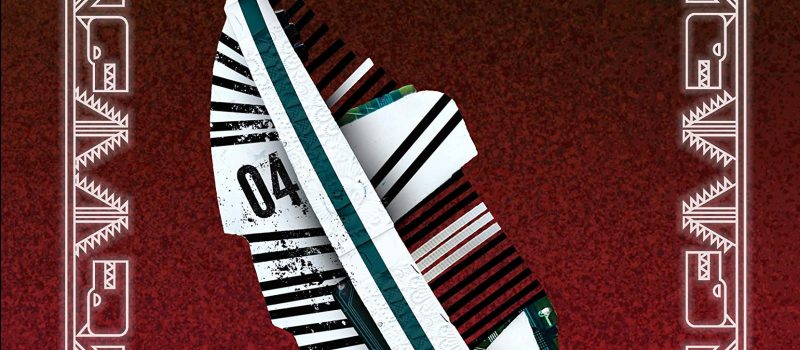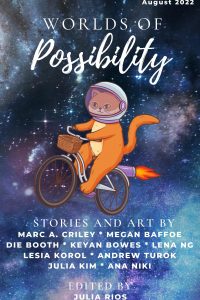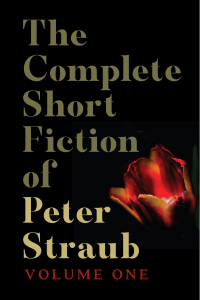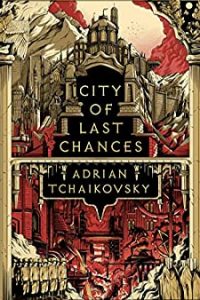Eugen M. Bacon Reviews Where Rivers Go to Die by Dilman Dila
 Where Rivers Go to Die, Dilman Dila (Rosarium 978-0-57836-803-0, $17.95, 204pp, tp) June 2023. Cover by Bizhan Khodabandeh.
Where Rivers Go to Die, Dilman Dila (Rosarium 978-0-57836-803-0, $17.95, 204pp, tp) June 2023. Cover by Bizhan Khodabandeh.
I approached Dilman Dila’s Where Rivers Go to Die with excitement. I found the Afrocentric cover in bold ochre and clay inviting, and his film work had left me expecting his fiction to have a presence on the page that would keep me charmed. This is Dila’s second collection and first major US publication. His first, A Killing Sun, came out in 2014, and drew from oral storytelling traditions to chart a futuristic Africa, as do some stories in Where Rivers Go to Die. He has over the years built his name through the BBC International Radio Playwriting Competition, the Commonwealth Short Story Prize, BSFA and Nommo Awards – so commendations for Where Rivers Go to Die from Tananarive Due, P. Djèlí Clark, Suyi Davies Okungbowa, and other strong black voices only served as a further lure.
Dilman Dila is a filmmaker who has produced stories that introduce a new Africa of the future, a liberated continent with its own innovative solutions to its inherent problems. His work offers a new gaze at African knowledge systems through his Ugandan televised world of Yat Madit that portrays direct democracy through AI. Yat Madit is an artificial intelligence system that allows 8000 local council chairpersons to jointly run the country, as they commune under a tree in postwar Northern Uganda – where the term “yat madit” means “a big tree.”
I can almost see how Dila leverages his experience working in film to craft his prose, in his approach to plot, characterisation, structure, and tension in his stories. The intense, cross-genre assortment of stories collected here blends African spirituality with horror, the fantastical, and technology in war-torn countries filled with wanton rape and murder, families and children in ruins, red rivers spitting corpses in swamps, as streets bled, homes burned, “dreams turned to ash, and misery flowed in the veins of the people.”
One would expect that rivers die quietly, but in this collection Dila insists not. The opening story “Fragments of Canvas” is a detective story with a strong sense of place, and characters and places whose naming borrows from the Swahili language. In fact, all of the stories in Where Rivers Go to Die feature culturally named characters – like Mataka, Segolene, Aya, Chuma (which means “metal” in Swahili), and places – like Mbarara, Mbale and Agururu, which both welcomes readers who are familiar with Afrocentric text and builds the world of his stories for those who cannot. “Fragments of Canvas” itself is brisk yet lavish and is a different kind of ghost story. Dead wife Atim appears to Inspector Winyi over urgent phone calls demanding that he visit the sites of murder in hotel honeymoon suites. There is rich language across the storytelling, where “black clouds prowled around the moon like dogs around a bitch on heat.” The inspector finds himself in the pulse of a century-old mystery filled with convincing dialogue and “mgangas” – witch doctors, shrines, shells, banana fibre dolls, skin and bone. He gets more desperate as crime solving runs away from him: “Now the clock ticked like the heartbeat of a happy demon.”
“Kifaro,” possibly a play on the Swahili word “kifaru,” meaning “rhino,” is the story of a near-death experience for protagonist Jamwa, who must lurch out of his body in a hospital bed and join forces with a mysterious elderly man, Ondego, whose purpose is to hunt evil spirit assassins (“kifaro”), to help solve Jamwa’s attempted murder.
“Monwor” is an intriguing tale of gender inequality and social injustice, where a perhaps too trigger-happy female detective in the family protection unit finds herself dealing with a non-domestic violence case – spitefully assigned her way after she rebuffs the District Police Commander’s attentions. Now she must solve the mystery of a night woman, a creature of the sea, this “monwor” that woos and eats alive unsuspecting men, in this intermingling of science and witchcraft, a theme that permeates the collection.
Some of Dila’s futuristic stories are more abstract and open to reader interpretation, as in “The Last Storyteller”, where a woman has an ornithopter that recreates a human who claims to be her husband. An ornithopter again rears its head in the novella, “The Flying Man of Stone”, which is painfully reminiscent of war-torn Africa. A man, Kera, and his father, Baba Chuma, fleeing massacre hurtle into a cave that turns out to be inhabited by ancient peoples who turn illiterate Baba Chuma into an inventor of a war machine. It’s a story of violence, hate, revenge, power, and what we might become when we fear the “other.” In the title story “Where Rivers Go to Die”, a boy banished in superstition for his disability encounters a bird in the valley of dead rivers, together with a strange machine that hums and flies him to new inventions in a world where a possessed one like him is welcome.
Perhaps some guide to Afrocentric words like man) and “kobi” (some sort of woven device) might help make the stories here more accessible to a wider audience, inviting others in without losing the self. Some stories start sharp, then linger a little in the worldbuilding with much narration, which might fidget some readers. It may also be somewhat clichéd to encounter familiar elements like mind control and zombies, the walking dead – which Dila does well to set in Afrocentric terms.
Closing the collection are “The Green Men Who Fly”, a tiny first-person story that extrapolates technology and African spirituality to revisit an alien encounter, and “The Terminal Move”, another first-person tale that offers up an expedition to unsettled land – Laceng must hold true his conviction that he can defeat the evil in the forest, scores of undead creatures in a zombie-like visitation.
Some readers will adore Where Rivers Go to Die, others may think it too dramatic, with missionaries burning alive, a boy becoming a god and reliving his ancestral heroes in Kibuuka and Luanda Magere legends in traditional East African history but readers fascinated with culturally hued speculative fiction will find in Where Rivers Go to Die a staggering Afrocentric medley that comes with stories that are plot, character- and drama-ready for cinematic adaptation. Much recommended.
Eugen M. Bacon, MA, MSc, PhD, is African Australian, a computer graduate mentally re-engineered into creative writing. She studied at Maritime Campus, less than two minutes’ walk from The Royal Observatory of the Greenwich Meridian. She’s a 2022 World Fantasy Award finalist, and was announced in the honor list of the 2022 Otherwise Fellowships for ‘doing exciting work in gender and speculative fiction’. Her book Danged Black Thing made the 2021 Otherwise Honor List as ‘a sharp collection of Afro-Surrealist work’. Eugen has won or been commended in international awards, including the Foreword Indies Awards, BSFA Awards, Bridport Prize, Copyright Agency Prize, Horror Writers Association Diversity Grant, Otherwise, Rhysling, Elgin, Aurealis, Australian Shadows, Ditmar and Nommo Awards for Speculative Fiction by Africans. Eugen’s creative work has appeared in literary and speculative fiction publications worldwide, including Award Winning Australian Writing, Fantasy Magazine, Fantasy & Science Fiction, and Year’s Best African Speculative Fiction. New releases: Mage of Fools (novel), Chasing Whispers (collection), An Earnest Blackness (essay collection).
This review and more like it in the June 2023 issue of Locus.
 While you are here, please take a moment to support Locus with a one-time or recurring donation. We rely on reader donations to keep the magazine and site going, and would like to keep the site paywall free, but WE NEED YOUR FINANCIAL SUPPORT to continue quality coverage of the science fiction and fantasy field.
While you are here, please take a moment to support Locus with a one-time or recurring donation. We rely on reader donations to keep the magazine and site going, and would like to keep the site paywall free, but WE NEED YOUR FINANCIAL SUPPORT to continue quality coverage of the science fiction and fantasy field.
©Locus Magazine. Copyrighted material may not be republished without permission of LSFF.








